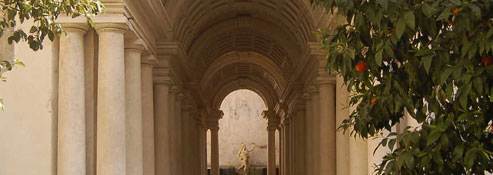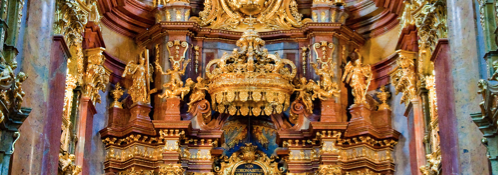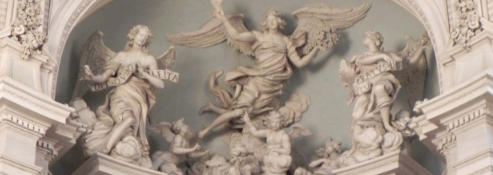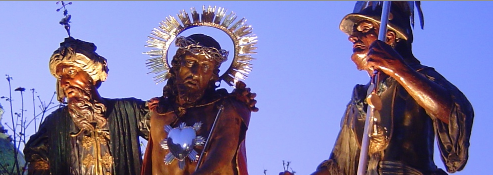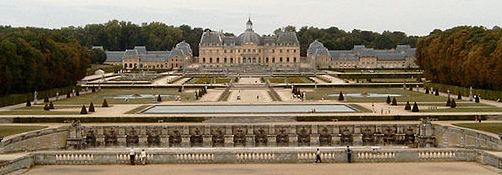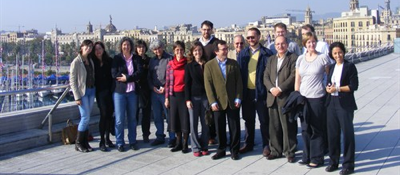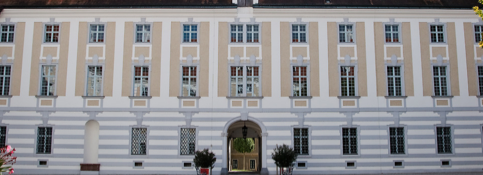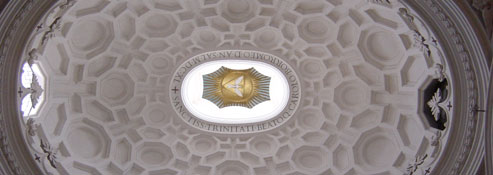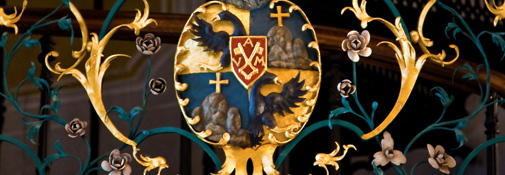In November 1895 the German physicist Wilhelm Conrad Röntgen discovered the electromagnetic radiation corresponding to the frequency interval nowadays known as X-rays. At the end of the following month he announced his discovery and, at the same time, carried out his first X-ray, exposing a photographic plate to the image of his wife Anna Bertha's left hand. The famous X-ray, in which the dark and ovoid shape of her wedding ring stands out, immediately became the symbol of marital fidelity. [2]
Röntgen's discovery happened in full Victorian age and, if, on the one hand, it was understood as the ideal medium to obtain "intimate photographs" which would show the lovers' passion, on the other hand, it was thought of as an intrusive technology, cause for deep embarrassment. It threatened, indeed, to disclose the most carnal secrets of human body, putting its sexuality on display. [3]
The history of X-rays popular reception and their subsequent use in the medical field has been the subject of several interesting publications. [4] In every one of them, the new technique for observing the body is interpreted within a wider context, where transparency becomes the centre of a visual paradigm bringing science and art closer together. Further confirming this accordance, they often quoted the section titled Sudden Enlightenment from chapter V of Thomas Mann's The Magic Mountain. [5] The episode, in fact, describes with intellectual finesse a young bourgeois's first encounter with X-rays, thus hinting at the lively debate which, in the early years of the 20th century, had developed around the medical applications of Röntgen's discovery. Hans Castorp, the protagonist of the story, therefore becomes the emblem of the difficult tackling of a new visual regime, heralding a critique to the diagnosis and treatment of the illness Mann pursues throughout his story. [6]
On this circumstance, lingering on this problem would be misleading, I believe, however, we ought to briefly list some elements. These cursory clarifications allow us, indeed, to bridge the gap with what had happened in the history of anatomic iconography and artistic anatomy well over two hundred years before.
Hamburg-born young engineer Hans Castorp goes to Berghof sanatorium in Davos, on the Swiss Alps, and visits his cousin Joachim Ziemssen. Although he had expected to stay for only three weeks, because of a slight bronchial infection, he is persuaded to postpone his departure. He will end up spending there seven years of his life. Besides all narrative developments, what I am interested in is the role that within the novel the instruments for body visualisation play, especially those revealing its inner side. In the afore-mentioned episode in chapter V, we should - I think - single out at least three aspects.
First: Hans Castorp experiences his inaugural encounter with X-rays with worry, disbelief and restraint. Mann underlines the young man's shyness who, sitting in the waiting room with his cousin, is upset by the fact that «no one, up to the present, had ever had a view into his organic interior». [7] In field of medical diagnosis, this attitude had to correspond to the most common reaction, at least for the early years of the 20th century. [8] In the novel, it is remarked by constantly recalling the darkness characterising the radiology room, an obscurity making the place ambiguous and solemn, halfway between a dark-room and a «witches' kitchen». [9]
Second: Hans's encounter with X-rays is concurrent with his growing feelings towards a woman, Madame Chauchat. The X-ray of the beloved plays an important part in the plot development and clearly shows that, before becoming an instrument for medical diagnosis, X-rays were a favoured means of expressing passions. In this respect, in the novel an interesting symmetry is established between the radiographic sessions Madame Chauchat undergoes and the days she spends sitting for her radiographer, dr Hofrat Behrens, who is painting her an oil portrait. Their intimate relationship, which made Hans very jealous, has grown day by day. The doctor, indeed, is the only one to have really got to know the woman, both from the observation of her inner anatomy (X-ray sessions) and from her external morphology (posing sessions). [10]
Third: X-rays are for Hans, first of all, a photograph of death. His reaction to the image of his hand exposed to the X-ray beam is emblematic:
And Hans Castorp saw, precisely what he must have expected, but what it is hardly permitted man to see, and what he had never thought it would be vouchsafed him to see: he looked into his own grave. The process of decay was forestalled by the powers of the light-ray, the flesh in which he walked disintegrated, annihilated, dissolved in vacant mist, and there within it was finely turned skeleton of his own hand […] and for the first time in his life he understood that he would die. [11]
The X-ray reveals, in fact, through its perfect balance of light and darkness, the body inner landscapes and helps better familiarise with them. Moreover, it exposes the skeleton and, for that reason, in the early years of its use, was charged with the symbolic values of vanitas. [12]
* * *
Bearing these concepts in mind (the light-darkness relationship, the inner body view as a means to get to know a person better, the memento mori characteristics), I propose, with a time leap of over two hundred and fifty years, to observe a mid-17th century oil canvas depicting a Repentant Magdalene, by French painter Georges de La Tour. [fig. 1] Even if anatomy is reduced to no more than an attribute and scientific examination is tempered by an atmosphere of melancholic meditation, this canvas offers a clear example of vanitas, where the decay of body and the power of light are interlaced. [13] Unlike other Magdalenes by La Tour, the one at the National Gallery of Washington shows a rather unusual display of the objects occupying the table surface. The bare and dimly lit environment seems to turn into a science laboratory, into a dark-room or, more precisely - since the light does not come from the outside, but it originates from the actual heart of the room -, into a magic lantern. [14] The candle in the background, indeed, serves a twofold end: on one hand, it defines a line of observation connecting Mary Magdalene's lit up face to the eye sockets of the skull reflected into the mirror and, on the other, it points to a further visual pattern which, overcoming the canvas boundaries, connects the skullcap to the observer. The deep meaning of vanitas runs along the latter axis: a better view of the skull, whose outline is shown against the light, is revealed to the spectator. The skull, like Hans's hand, thus becomes the emblem of the end, and the light, at the same time, is the most appropriate means to convey such an image.
However, there is a difference between the two representations, and it is no small difference. In the hand's X-ray, the body is crossed by light, made transparent; in the painting, the surface of the skull remains dull and strenuously resists being crossed by the light beams. La Tour's skullcap is not, therefore, a transparent matter.
But in representing the flesh crossed by light, the French painter was a master. We must not forget that, in at least a couple of his. [15] paintings, the hand is actually the element struck by the light beam. If we observe, for instance, Saint Joseph the Carpenter at the Louvre, we cannot but be impressed by the detail of Jesus's translucid hand. Raised to shield from the flame, the limb is opalescent; its extremities are transfixed, like an X-ray, by the candle glare. The same happens, with as much patency, in The Education of the Virgin (with a Book) at the Frick Collection, where, this time, it is Mary's hand to light up in front of the slender flame. [16]
Also the skullcap, however, can become translucent matter. A late-17th century engraving by Spanish artist Crisóstomo Martínez shows in the lower half, among other things, a scroll with an engraved image of a backlit skullcap. [fig. 2] The elements depicted (skull, hand and candle) occupy a similar position to the one remarked in La Tour's Magdalene. Some substantial differences, though, turn Martínez's image into the extravagant prototype of a macabre lamp, aesthetically and conceptually similar to certain optical devices by Athanasius Kircher. [17] Whereas, Mary Magdalene's hand follows with her delicate fingertips the skull's pits and protrusions, the one of Martínez's physician holds the skullcap placing the convex part in front of the candle flame. The spectator, therefore, observing the light rays breaking along the figure contour, will realise that in the middle, where matter is more tender, the light is finally able to seep through and the bone initial opacity leaves its place to warm opalescence. The mirror, then, present in La Tour's composition, recalls the more general idea of optic device. We have to, in fact, imagine that the scientist's gesture holding the skullcap mirrors the action of graphically recording the shapes revealed by light.
In the time of Martínez, the engraver from Valencia who came to Paris in 1687 set out to make a large anatomy atlas and study the latest practices of scientific representation. [18] , such a back-illumination system was probably not so unusual. In the second half of the 17th century, indeed, the early rudimentary devices to visualise internal organs would have made their first appearance. [19] Martínez's skull-lamp would marginally fall into this range and posit itself as a useful tool to study the ontogenesis, in other words, the processes, through which the biological development of the living organism takes place. Illuminating a child's skullcap from the rear - like the Spaniard does - means, in fact, tracing its sutures and, consequently, highlighting its growth processes. [20]
Martínez singlehandedly defies the limits of representation. In the nice plates he is nowadays remembered for, the awareness of the difficult task he set himself to, i.e. representing the entire human body, its transformations and processes, constantly comes back. The luminous device I focused on is just an example, no less one of the most overlooked. Even if La Tour was not likely to be familiar with similar anatomic devices, regardless, there still is the fascination of a pair of images reactivating, after half a century, one of the most frequented triangulations of Baroque vanitas (skull, candle, mirror), shifting its meaning from the metaphoric context of devotion and penitence to the literal one of scientific research.
* * *
A light-operating device for anatomic examination is useful, as long as the anatomist or the artist is interested in a limited portion of the body: the hand, the skull, etc. It is more difficult to imagine that the same system can be applied to the whole human body. Only at the end of the 19th century, in fact, technology would have allowed the human eye to penetrate inside the body in any of its areas and obtain an overall picture of man in transparency. Whereas, at the end of the 17th century, as we have remarked, the in-depth viewing was limited to few, chosen areas. Martínez tried to solve this problem, patenting - if we may say so - some iconographic blueprints of the transparent body.
The plates we nowadays recognise to be original works by the Spanish artist are eighteen (the numbering actually continues until number nineteen, because we have two states of the same engraving). Sixteen of these, held at the Municipal Archive of Valencia, were discovered by José Maria López Piñero and published for the first time in 1964. [21] The other two, very well-known, have been studied since the first half of the 18th century. Plate XIX, illustrating the proportions of male body, was printed when Martínez was still alive, initially in 1689 in Paris and then in 1692 in Frankfurt and Leipzig. [22] [fig. 3] Whilst, plate XVII - the one with the backlit skullcap - was published for the first time in 1740, in a volume featuring both plates. The two images were printed once more, by appointment and privilege of the Académie Royale de Peinture in Paris, forty years later, in 1780. [23]
Critics have interpreted these illustrations mainly in one way, considering them as incunabula of the iconography of transparent body and concentrating on the unique relationship between the inner and outer self they show. In the plate on proportions, for example, the spine of the figure from behind is drawn over the back external musculature. In the man portrayed frontally, on the other hand, the rib cage, pelvis and limb bones gradually emerge and are arranged on the same visual plane as the muscles and some superficial elements (the palm of the hand, the neck, the right pectoral). The result is the ambiguous yet effective representation of a body, neither écorché nor skeleton nor living model. The depth levels blend into one another and the basic principles of stratification are altered to allow a contemporary view of several systems: from skin to muscles, to skeleton. The play of transparencies is so refined that only a careful analysis would show the different planes intertwine. If, as far as decoding is concerned, this kind of image is not easy to interpret, from the point of view of simultaneous vision, it certainly is what the most advanced 17th century anatomic representation had produced.
On the other hand, in the famous plate XVII Martínez chooses another iconography of the transparent body. Above the base holding the collection of dissected bones, there is a gathering of fourteen skeletons seemingly busy doing the most diverse things. One is holding a pendulum, one is sitting with its legs crossed and grabbing an apple between its right hand thumb and index (a likely reference to recent Isaac Newton's discoveries). [24] , another one is leaning on a sickle and pointing to the horizon. Peculiar poses aside, what has excited critics the most is the fact that these skeletons are actually surrounded by the outlines of the bodies they belong to. Their contours are drawn with an unbroken line completing the skeletal system, creating the strange effects of silhouettes standing out of the background. It is another system of simultaneous representation, a simpler case to decode than the previous one, but equally appropriate to show the causal relation between inside and outside the body.
Among the graphic techniques Martínez used to represent the body transparency and favour that kind of knowledge based on observation both of the inside and outside, we must also mention the typical one of the myologic plates in Valencia. This method was mainly introduced to study movement. Plate XIV, for instance, bears, in the lower part, a detailed depiction of the bones forming the pelvis. At a closer look the skeleton is, so to say, bridled in a weave of lines. They sketch out the muscles joints and their possible movements. [25]
Martínez was - undoubtedly - the greatest innovator of late 17th-century anatomic iconography. Unfortunately, only one of his plates was printed when he was still alive, but it was enough to affect his popularity, both in the scientific field (he was, indeed, ahead of his time also in reproducing microscope images). [26] and in the art world. In the academies of fine arts, especially, his representation of the body in transparency was appreciated since it speeded up the learning process of physiology and dynamics, clearly showing their relation with external morphology. Tracing the figure outline around the skeleton, highlighting the muscles joints on the bones or superimposing different levels of depth, the young artist would easily obtain at a glance what one could have only got from shifting the eye from the skeleton to the échorché, to the living model. [27]
These iconographic prototypes were widely used. This can be seen, first of all, from the two 18th-century editions of plates XVII and XIX, titled Nouvelle exposition de deux grandes planches gravées, Et dessignées d'après Nature, par Chrysostome Martinez, followed by the duodecimo volume Eloge Historique, containing a short biography of the artist and the comments on the two illustrations. But the success of Martínez's models does not certainly stop here. In the remaining pages, I shall briefly try to follow the main episodes of the fortune of these iconographies, focusing especially on artistic anatomy handbooks and thus hoping to come full circle from the discovery of X-rays, to the waning of the 19th century. [28]
* * *
A correspondence which I believe has not yet been looked into is the one between Martínez's plates and some illustrations accompanying the almost contemporary treatise on painting by José García Hidalgo, titled Principios para estudiar el nobilísimo y real arte de la pintura and published in Madrid in 1691. [29] Hidalgo's plate 182 basically uses the same iconographic blueprint as Martínez's plate XVII. [fig. 4] Transparency, however, is dealt with in a slightly different manner. Hidalgo chooses to fill the inside of the figures with a thick stroke, except of course for the bones, making the bodies stand out on the light background. Martínez, as we have seen, proceeds the other way around, leaving the inside of the silhouettes empty. His backdrop, indeed, is made of the lights and shades of the architectural elements of an ideal city (maybe Jerusalem). [30] and of a superb stormy sky. The affinity with a handbook for young artists conceived in the same years in Spain further supports the belief that Martínez's plate was created from the start, exactly as plate XIX, besides for the study of osteology, also for that of artistic anatomy. [31]
Still at the end of the 17th century, there was another important episode with regard to the critical fortune of Martínez's work and, consequently, to that of the iconography of the transparent body. The great anatomist Jacob Benignus Winsløw, a student of Guichard Joseph Duverney and his successor at the Académie des Sciences in Paris, learned about the Spaniard's work, as soon as he arrived in the French capital, probably in 1698. It seems that he did not trouble himself with undertaking a complete edition of the two plates, but simply updated the comment on plate XIX, Martínez himself had drafted, and redacted a note, maybe already existing, to plate XVII. We could surmise that the texts edited by Winsløw have been merged, at least in part, into the Eloge Historique, which would accompany the two prints in 18th-century editions. [32]
We have now come to the 18th century, when Martínez's pair of plates became well-known mainly in the art world. The first significant example of direct influence in making anatomic images can be found in the treatise on anatomy for artists championed by the Parisian printer and dealer Jacques Huquier and overseen by the famous Edme Bouchardon. The in folio handbook, titled L'anatomie necessaire pour l'usage du dessein, Par Edme Bouchardon, Sculpteur du Roi, is not dated. [33] We know, however, thanks to an advertisement appeared on the Mercure de France, that from October 1741 the text was available in the printer's workshop. [34] Only a year before, always in Paris, Martínez's work had been re-published and, for the first time, plate XVII with its extravagant fourteen skeletons was presented to the audience. Also the treatise by Bouchardon soon became a rare book, made in few copies and never printed again. The bad quality of the plates and a lack of the critics' attention, always inclined to disregard this episode in the sculptor's biography, certainly played a part in this. The rather poor drawings, indeed, were partly made - as shown by Henry Ronot, the only one who devoted a brief study to the treatise - by the sculptor's brother, Jacques-Philippe. [35] The careful examination of the fourteen plates allows to discern different hands and the paternity of the drawings used to make the engravings. On this occasion, however, I shall merely mention the last three plates of the treatise, where the iconography of the transparent body, borrowed from Martínez's precedent, is used in a way compliant with 18th-century anatomy compendia for painters and sculptors. [36] The plates devoted to osteology and myology are followed by three images where the representation of the skeleton is harmonised with the one of the muscles, showing, in a particular way, the muscle mass overlaying the bones and their arrangement in traction and expansion. [fig. 5] This sort of simultaneous representation, with the muscle joints in plain view, is likely to be regarded as fundamental to study movement in the human body, a field of research and practice which, in the artist's training, took place at the end of a path which had started with the analysis of the skeletal and myological systems.
The second half of the 18th century saw, especially in Italy, the controversy between the champions and the detractors of artistic anatomy grow worse. In Saggio sopra la pittura Francesco Algarotti places himself among the former. [37] In a long-standing debate, which in the same years opposed, among others, the canon Luigi Crespi to the anatomist Ercole Lelli, Algarotti embraced Maratta's view of the «tanto che basti», a moderate scientism - even if slightly veering towards his friend Lelli's views - which, without falling into specialism, would be able to guide the young painter's early training. [38]
In support of this theory, Algarotti's text mentions some simple exercises to familiarise the eye with the human body. One, in particular, is intended to train the student's eye to the image of the body as a transparent shell: «Dato un semplice dintorno della notomia, o di una statua, aggiugnervi le parti tra esso comprese, e muscoleggiarle secondo la propria qualità del dintorno, che dinota nella figura tale attitudine, tal movimento, e tal forza». [39] This exercise, which based its legitimacy on the comparison with classic statues, drew from the work of grammar masters, who used to put their pupils before vulgarised classics, urging them to translate into Latin what was to be carefully compared to the original text. [40]
Although Algarotti's exercise cannot be considered a direct descendant of Martínez's iconography, it equally highlights the urgent need to show artistic anatomy as a study of the inner body, which has clear repercussions on the figure morphology.
Algarotti's training and the last 18th-century reprint of Martínez's plates (1780) paved the way to the spread of the transparent body iconography, marking the end of the 18th throughout the 19th century. Johann Heinrich Lavater, in his treatise on osteology and myology for the use of artists. [41] , added some simultaneous representations of the two (skeletal and muscular) systems, where, for the first time, different colours were used to emphasise the levels of depth and a dotted line to sketch the spaces occupied by secondary elements (diaphragm, vascular system, etc.). [fig.6]
The same principles led Jean-Galbert Salvage to publish, in 1812, that anatomy handbook which became the essential reference, especially in France, for the correct representation of the neoclassical body. In Anatomie du Gladiateur combattant, applicable aux beaux arts, Salvage summed up in few refined plates the canons of classic sculpture and the most advanced studies on human anatomy. [42] [fig. 7] The result is a book with an extraordinary expressive force, whose lithographic techniques are applied to the fullest in order to show, through variations in line and colour, the different levels: the body and its musculature are literally peeled off layer by layer. [43]
The fortune of Salvage's work was the reason, not only for the success of neoclassical aesthetics in the study of artistic anatomy, but also for a further dissemination of the transparent body iconography. It is shown by the exact both illustrative and theoretical references we find, in Italy, in the polished plates (1837) by Francesco Bertinatti [fig. 8], a professor of artistic anatomy in the 1830s at the Academy of Fine Arts in Turin, and in those by his successor Alberto Gamba (1862). [44] [fig. 9] Meanwhile, on the international level, it is worth mentioning Julien Fau's treatise, Gamba drew many models from, and Burkhard Wilhelm Seiler's, a late survival of neoclassical taste, both published in 1850. [45]
We have now come up to the second half of the 19th century. The obsession for transparency results into the numerous applications of Röntgen's discovery, giving life - as we have had the chance to observe - to a whole new regime. The early 20th-century artistic avant-gardes will widely profit from this change of paradigm, speculating, not only on the concept of transparency, but on the extrasensory reality implicit in the new technology, and on the ensuing inadequacy of human perception. [46] From what we have thus briefly outlined, Martínez's transparent bodies represent the supposed beginning in the Baroque age, whilst the discovery of X-rays marks the end, but it also hands over the baton to a new era where the perception of body is destined to change altogether.
Images
1. Georges de La Tour, The Repentant Magdalene, c. 1635/1640, oil on canvas, 113 x 92.7 cm, Washington, National Gallery of Art

2. Crisóstomo Martínez, Tablas anatómicas. Lámina XVII, original size of the engraving 616 x 560 mm.

3. Crisóstomo Martínez, Tablas anatómicas. Lámina XIX, original size of the engraving 677 x 508 mm.

4. Plate 182 in J.G. Hidalgo, Principios para estudiar el nobilísimo y real arte de la pintura, Madrid 1691

5. Plate 13 in E. Bouchardon, L'anatomie necessaire pour l'usage du dessein, Paris, s.d.

6. Plate 11 in J.H. Lavater, Élémens anatomiques d'ostêologie et de myologie à l'usage des peintres et sculpteurs, Paris 1797

7. Plate 8 in J.-G. Salvage, Anatomie du Gladiateur combattant, applicable aux beaux arts, Paris 1812

8. Plate VII in F. Bertinatti, Tavole anatomiche annesse agli Elementi di anatomia fisiologica applicata alle belle arti, Torino 1837

9. Plate XV in A. Gamba, Lezioni di anatomia descrittiva-esterna, applicata alle Arti Belle, Torino 1862 (detail)

Notes
1. The paper title is freely taken from the work by Chen Zhen, Crystal Landscape of Inner Body, 2000. I would also like to thank Jennifer Cooke for assisting me during the English translation of this text.
2. B.H. Kevles, Naked to the Bone: Medical Imaging in the Twentieth Century, New York 1998, pp. 16-32.
3. Ibid., pp. 118-120.
4. Besides Kleves, Naked to Bone cit., refer to: L.D. Henderson, The Fourth Dimension and Non-Euclidean Geometry in Modern Art, Princeton 1983; Ead., X Rays and the Quest for Invisible Reality in the Art of Kupka, Duchamp, and the Cubists, in «Art Journal», XLVII (1988), 4, pp. 323-340. On the "transparent body" before the X-rays era, see: V.I. Stoichita (ed.), Le corps transparent, Roma 2013.
5. Th. Mann, The Magic Mountain, New York 1969, pp. 203-219 (ed. or.: Der Zauberberg, Berlin 1924). With regards to the section Sudden Enlightenment and the presence in the novel of references to X-rays, see: J. van Dijck, X-Ray Vision in Thomas Mann's The Magic Mountain, in The Transparent Body: A Cultural Analysis of Medical Imaging, Seattle-London 2005, pp. 83-99.
6. S. Sontag, Illness as Methaphor, New York 1977, pp. 34-35.
7. Mann, The Magic Mountain cit., p. 210.
8. Kevles, Naked to the Bone cit., pp. 33-41; van Dijck, Vision in Thomas Mann's The Magic Mountain cit., pp. 85-88; F. Ortega, O corpo incerto: corporeidade, tecnologias médicas e cultura contemporânea, Rio de Janeiro 2008, pp. 127-134.
9. Mann, The Magic Mountain cit., p. 214.
10. Van Dijck, Vision in Thomas Mann's The Magic Mountain cit., p. 89-93.
11. Mann, The Magic Mountain cit., pp. 218-219.
12. Van Dijck, Vision in Thomas Mann's The Magic Mountain, cit., pp. 93-97.
13. L. van Delft, I secoli d'oro dell'anatomia, in G. Olmi (ed.), Rappresentare il corpo. Arte e anatomia da Leonardo all'Illuminismo, exhibition catalogue, Bologna 2004, pp. 96-103.
14. For a critical interpretation of the light-darkness relationship in La Tour's oeuvre and for a comparison with his canvases of similar subject, see: Ph. Conisbee, An Introduction to the Life and Art of Georges de La Tour, in Ph. Conisbee (ed.), Georges de La Tour and his World, exhibition catalogue, Washington, New Heaven-London 1996, pp. 101-118.
15. On the debated authorship of The Education of the Virgin (with a Book) in the Frick Collection, see, among others: J.-P. Cuzin, P. Rosenberg (eds.), Georges de La Tour, exhibition catalogue, Paris 1997, pp. 238-239.
16. Conisbee, An Introduction… cit., pp. 123-127.
17. On Kircher's optical machines see: M.G. Ianniello, Kircher et l'Ars Magna Lucis et Umbræ, and L. Cassanelli, Macchine ottiche, costruzioni delle immagini e percezione visiva in Kircher, in M. Casciato, M.G. Ianiello, M. Vitale (eds.), Enciclopedismo in Roma Barocca. Athanasius Kircher e il Museo del Collegio Romano tra Wunderkammer e museo scientifico, Venezia 1986, pp. 230-232, 239-243. Note in particular the similarity between Martínez's lamp and Kircher's Parastatic Machine (Ibid., fig. 96), published in: J. Kestler, Phisiologia Kircheriana Experimentalis, Amsterdam 1680.
18. An up-to-date, though cursory, study on Martínez's life and work can be found in B. Röhrl, History and Bibliography of Artistic Anatomy, Hildesheim-Zürich-New York 2000, pp. 110-120.
19. Ortega, O corpo incerto … cit., p. 131-132.
20. N. Valverde, Small Parts: Crisóstomo Martínez (1638-1694), Bone Histology, and the Visual Making of the Body Wholeness, in «Isis», C (2009), 3, p. 531.
21. J.M. Lopéz Piñero, El atlas anatomico de Crisóstomo Martínez grabador y microscopista del siglo XVII, Valencia 1964; 2nd ed. 1982.
22. Nouvelles figures de proportions et d'anatomie du corps humain. Ouvrage non seulement utile aux Médecins et Chirurgiens, mais encore aux Peintres, Sculpteurs, Graveurs, Brodeurs et généralement à toutes les personnes sçavantes et curieuses de connaître exactement la structure du Corps de l'Homme, designées d'après Nature et gravées par Chrysostome Martínez Espagnol, Peintre Anatomiste, Paris 1689; Ad proportionem Corpis Humani et anatomiam, Frankfurt-Leipzig 1692.
23. Nouvelle exposition de deux grandes planches gravées, Et dessignées d'après Nature, par Chrysostome Martínez, Espagnol, Représentant des Figures très-singulières de Proportion et d'Anatomie. Ouvrage important, et utile, non seulement aux Médecins et aux Chirurgiens mais encore à tous les Peintres, Sculpteurs, Graveurs, Dessinateurs, et généralement toutes les Personnes sçavantes et curieuses de connaître exactement la Structure du Corps Humain. Avec un Eloge Historique de l'Aucteur, suivi de deux Discours, qui expliquent les deux Estampes tirées sur ces deux planches, Paris 1740; Nouvelle exposition de deux grandes planches gravées […], Paris 1780. For an account of the plates editorial fortune refer to Röhrl, History and Bibliography of Artistic Anatomy cit., pp. 110-112, 420-421. See also for a secondary bibliography: M. Cazort (ed.), The Ingenious Machine of Nature: Four Centuries of Art and Anatomy, exhibition catalogue, Ottawa 1996, pp. 178-180; Ph. Comar (ed.), Figures du corps. Une leçon d'anatomie à l'École des Beaux-Arts, exhibition catalogue, Paris 2008, pp. 178-179.
24. K.B. Roberts, J.D.W. Tomlinson, The Fabric of the Body: European Traditions of Anatomical Illustration, Oxford 1992, p. 283.
25. Valverde, Small Parts… cit., p. 531.
26. Ibid., pp. 526-533.
27. On the educational relevance of Martínez's plates, see: Röhrl, History and Bibliography of Artistic Anatomy cit., pp. 116-120.
28. On the fortune of Martínez's plates, see also: J.M. Lopéz Piñero, La repercusion en Francia de l'obra anatomica de Crisóstomo Martínez, in «Cuadernos de historia de la medicina española», 1967, 6, pp. 87-100.
29. J.G. Hidalgo, Principios para estudiar el nobilísimo y real arte de la pintura, Madrid 1691.
30. Cazort (ed.), The Ingenious Machine of Nature… cit., p. 180.
31. See note 26.
32. On the debated relationship between Winsløw and Martínez's work, see: Lopéz Piñero, La repercusion en Francia de l'obra anatomica de Crisóstomo Martínez cit., p. 93.
33. E. Bouchardon, L'anatomie necessaire pour l'usage du dessein, Paris, s.d.
34. H. Ronot, Le traité d'anatomie d'Edme Bouchardon, in «Bulletin de la Société de l'Histoire de l'Art Français», 1968, pp. 93-100.
35. Ibid., pp. 94-96.
37. F. Algarotti, Saggio sopra la pittura, Livorno 1763.
38. M. Ferretti, Il notomista e il canonico. Significato della polemica sulle cere anatomiche di Ercole Lelli, in I materiali dell'Istituto delle Scienze, exhibition catalogue, Bologna 1979, pp. 103-106.
39. Algarotti, Saggio sopra la pittura cit., p. 32.
40. Ibid., p. 33.
41. J.H. Lavater, Élémens anatomiques d'ostêologie et de myologie à l'usage des peintres et sculpteurs, par J.H. Lavater, traduit de l'allemand par Gauthier de la Peyronie et enrichi de notes et observations intéressantes du traducteur, Paris 1797.
42. J.-G. Salvage, Anatomie du Gladiateur combattant, applicable aux beaux arts, ou Traité des os, des muscles, du mécanisme des mouvemens, des proportions er des caractères du corps humain, Paris 1812.
43. An up-to-date study on Salvage's work can be found, among the others, in Ph. Sénéchal, L'Anatomie du Gladiateur combattant de Jean-Galbert Salvage: science et art à Paris sous l'Empire, in O. Bonfait, V. Gerard Powell, Ph. Sénéchal (eds.), Curiosité. Études d'histoire de l'art en l'honneur d'Antoine Schnapper, Paris 1998, pp. 219-228.
44. F. Bertinatti, Tavole anatomiche annesse agli Elementi di anatomia fisiologica applicata alle belle arti, Torino 1837; A. Gamba, Lezioni di anatomia descrittiva-esterna, applicata alle Arti Belle, Torino 1862.
45. J. Fau, Anatomie artistique élémentaire, Paris 1850; B.W. Seiler, Anatomie des Menschen für Künstler und Turnlehrer von B.W. Seiler, Leipzig 1850.
46. Henderson, The Fourth Dimension and Non-Euclidean Geometry in Modern Art cit.; Ead., X Rays and the Quest for Invisible Reality… cit.



